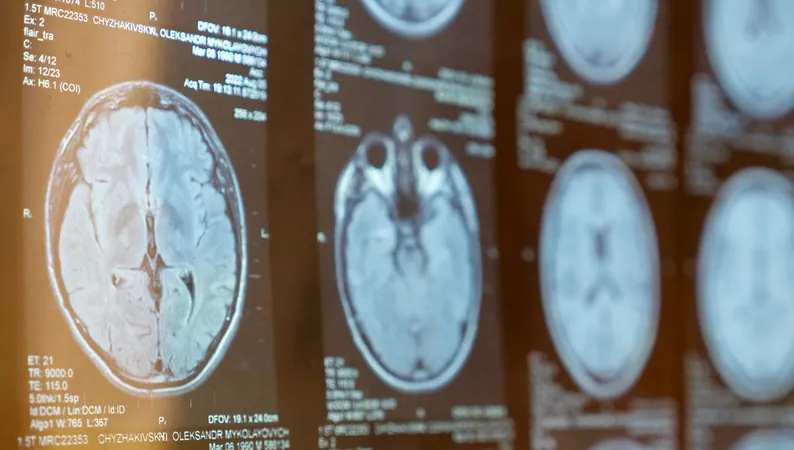
Unraveling the Epstein-Barr Virus Link to Multiple Sclerosis: The Quest for a Cure
2025-04-08
Author: Ming
Introduction
Recent research has illuminated the mysterious connection between the Epstein-Barr virus (EBV) and multiple sclerosis (MS), a complex and often debilitating disease of the central nervous system. Groundbreaking studies conducted by Professor Alberto Ascherio and his team have established that EBV infection is almost universally present in patients who develop MS. Their analysis, which examined the health data of 10 million former military personnel in the United States, strongly suggests that MS is frequently a delayed response to EBV infection.
Geographical Patterns
The geographical patterns of MS reveal a striking insight into this connection. "Multiple sclerosis has a very notable geographical distribution," explains Professor Ascherio. "It is rare in tropical regions, while the incidence significantly increases in temperate zones. Interestingly, when individuals migrate from high-incidence areas to low-incidence areas, their risk decreases, whereas those moving to high-incidence regions face an elevated risk."
Environmental Factors and the Hygiene Hypothesis
This peculiar distribution led Ascherio to explore potential environmental or lifestyle factors. He initially considered the hygiene hypothesis, which posits that reduced exposure to microorganisms in childhood may hinder the development of robust immune systems. However, he soon connected the dots between infectious mononucleosis, primarily caused by EBV, and increased susceptibility to MS. Despite mounting evidence supporting this theory, the exact mechanism linking EBV to MS remains unclear.
Theories on Disease Mechanism
Currently, theories abound regarding how the virus might trigger the disease. One prevalent hypothesis suggests a cross-reactivity between the immune response against EBV and certain human proteins found in the brain. However, Ascherio remains skeptical of this explanation, proposing that the disease may instead arise from viral reactivation within the central nervous system.
Research and Treatment Advances
The confirmed relationship between EBV and MS has sparked new avenues for treatment research. Clinical trials are currently assessing the efficacy of antiviral drugs as supplementary treatments for MS. Additionally, researchers are exploring the potential for a vaccine that could modulate the immune response, potentially halting MS in its tracks. Although these advancements may take years to materialize, Ascherio is optimistic about the research landscape, stating, "There’s a lot of research that hopefully will bring us somewhere."
Funding Challenges
However, progress in this critical area of medical research is currently hampered by significant funding challenges. Ascherio highlights the devastating cuts to research budgets under recent administrations, which have stymied advancements in the pursuit of cures for various diseases. "We've developed unique biological resources and data, yet we struggle to secure funding for vital research," he laments.
Conclusion
Despite these obstacles, Ascherio and fellow researchers remain hopeful. With continued support and innovative investigations, we may soon unravel the full extent of EBV’s role in MS and potentially pave the way for groundbreaking treatments. The scientific community is eagerly watching as this pivotal research unfolds—exciting times could lie ahead for those affected by multiple sclerosis!



 Brasil (PT)
Brasil (PT)
 Canada (EN)
Canada (EN)
 Chile (ES)
Chile (ES)
 Česko (CS)
Česko (CS)
 대한민국 (KO)
대한민국 (KO)
 España (ES)
España (ES)
 France (FR)
France (FR)
 Hong Kong (EN)
Hong Kong (EN)
 Italia (IT)
Italia (IT)
 日本 (JA)
日本 (JA)
 Magyarország (HU)
Magyarország (HU)
 Norge (NO)
Norge (NO)
 Polska (PL)
Polska (PL)
 Schweiz (DE)
Schweiz (DE)
 Singapore (EN)
Singapore (EN)
 Sverige (SV)
Sverige (SV)
 Suomi (FI)
Suomi (FI)
 Türkiye (TR)
Türkiye (TR)
 الإمارات العربية المتحدة (AR)
الإمارات العربية المتحدة (AR)